There’s something magical about planting a seed and watching it grow into a tree — especially when that tree one day blooms with beautiful blossoms and sweet, juicy cherries. If you’ve ever savored a cherry and thought about what might happen if you planted its seed, you’re in for a fun and rewarding gardening project. Growing a cherry tree from seed is possible, and while it takes time and care, it’s a fantastic DIY project for any plant lover.
In this detailed guide, you’ll learn how to grow a cherry tree from seeds (pits) right from your kitchen counter to your backyard. Let’s get started!
Why Grow a Cherry Tree from Seeds?
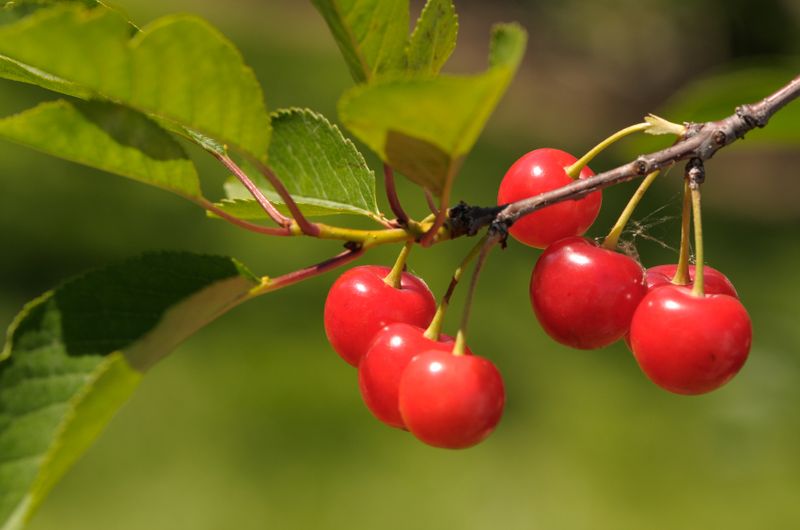
While most cherry trees you buy at nurseries are propagated by grafting, growing one from seed can be a fulfilling and educational experience. Here’s why many gardeners love this DIY project:
- It’s cost-effective — no need to buy expensive nursery plants.
- A fun and hands-on family project — kids love seeing a seed become a tree.
- Adds beauty to your garden with its blossoms and leafy canopy.
- Connects you to nature through a slow, rewarding growth process.
Do note, however, that cherries grown from seed may not produce fruit identical to the parent tree, especially if the fruit came from a hybrid variety. But whether or not you harvest fruit, you’ll have a gorgeous, flourishing tree to enjoy.
Types of Cherry Trees You Can Grow
Before you start, it’s helpful to understand the two main types of cherry trees you might grow:
Sweet Cherries (Prunus avium)
- Typically enjoyed fresh.
- Varieties like Bing, Rainier, and Stella.
- Require mild summers and cold winters.
- Usually need two trees for cross-pollination.
Sour Cherries (Prunus cerasus)
- Commonly used in pies, jams, and preserves.
- Varieties like Montmorency and North Star.
- More cold-hardy and often self-pollinating.
Depending on your climate, you can choose a suitable type or experiment with both.
Step-by-Step: How to Grow a Cherry Tree from Seeds
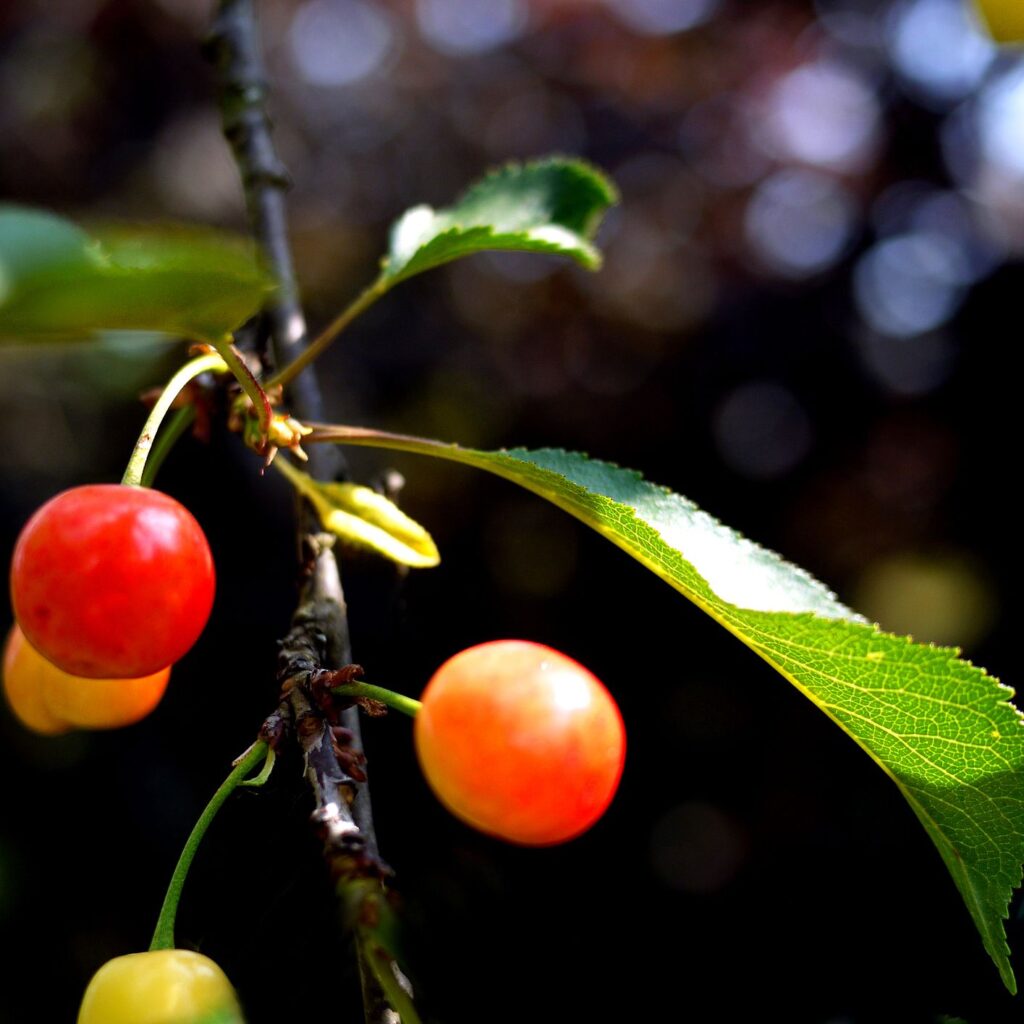
Growing a cherry tree from seed isn’t difficult, but it does involve several steps to mimic the tree’s natural life cycle. Here’s exactly how to do it:
Step 1: Gather Fresh, Organic Cherries
Start by choosing fresh, organic cherries. Store-bought cherries are often treated with chemicals that can affect seed viability. If possible, pick cherries from a local farm or organic market.
Step 2: Clean and Dry the Pits
After enjoying the cherries, collect the pits (seeds) and clean them thoroughly:
- Rinse pits in lukewarm water.
- Scrub off any fruit residue using a soft brush or cloth.
- Let them dry on a paper towel for 3-5 days.
Pro Tip: Drying the pits helps to remove remaining pulp and prepares them for cold stratification.
Step 3: Stratify the Seeds
Cherry seeds need to experience a cold, moist period (like winter) before they’ll germinate — a process known as cold stratification.
How to Stratify Cherry Seeds:
- Place the dried seeds in a small container or ziplock bag filled with moist (not wet) peat moss, sand, or a paper towel.
- Seal the container or bag and store it in the refrigerator at 34°F to 40°F (1°C to 4°C).
- Keep them refrigerated for 8 to 12 weeks.
Check periodically to ensure the medium remains moist and there’s no mold. Replace the paper towel or moss if necessary.
Step 4: Plant the Seeds in Pots
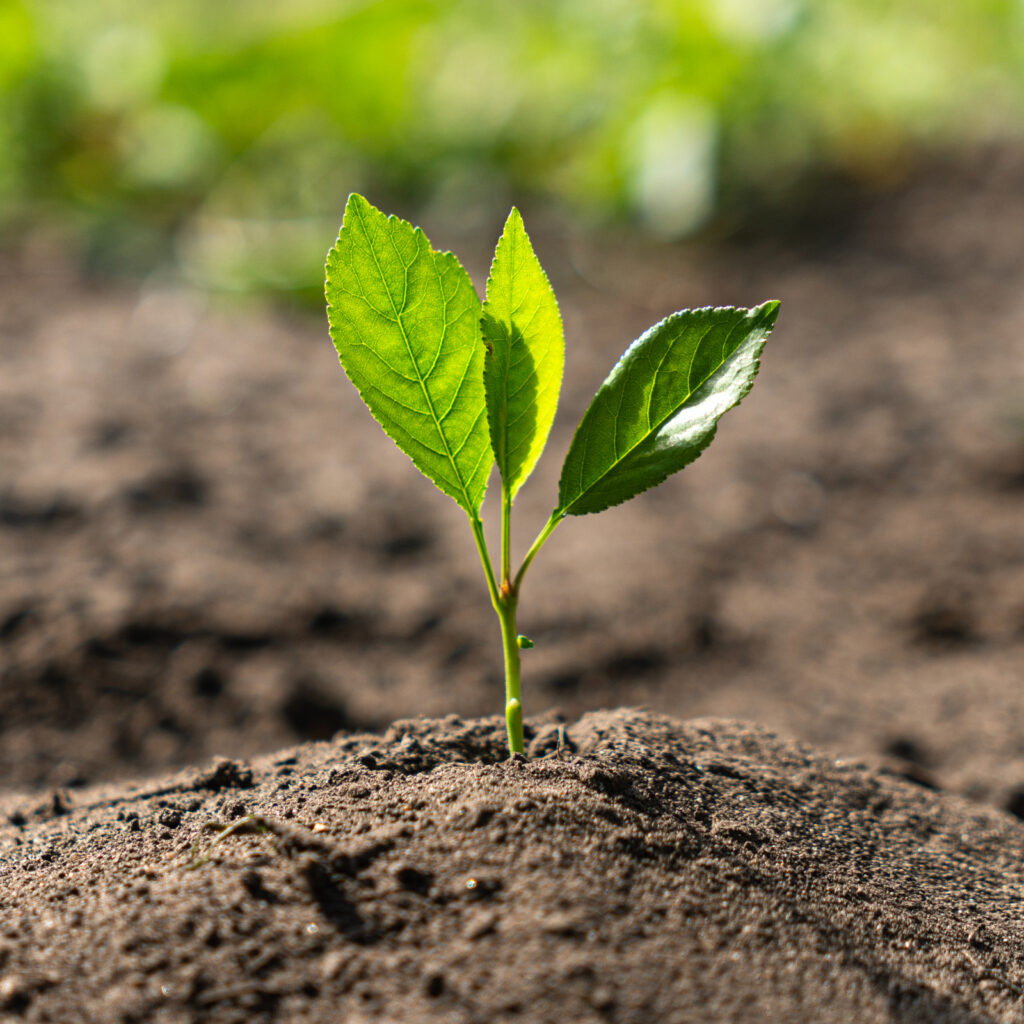
After 8-12 weeks, some seeds may begin to crack open or sprout tiny roots — this means they’re ready for planting.
How to Plant Cherry Seeds:
- Use small pots with well-draining potting mix.
- Plant each seed about 1 to 2 inches deep.
- Water the soil lightly to make it evenly moist.
- Place the pots in a sunny indoor location like a bright windowsill.
Step 5: Caring for Seedlings
Seedlings typically emerge in 2-4 weeks, depending on conditions.
Light:
Cherry seedlings need 6-8 hours of sunlight daily. A south-facing window or grow light works well.
Watering:
Keep the soil consistently moist but avoid overwatering. Water when the top inch of soil feels dry.
Temperature:
Maintain temperatures between 65°F and 75°F (18°C to 24°C).
Step 6: Transplanting Outdoors
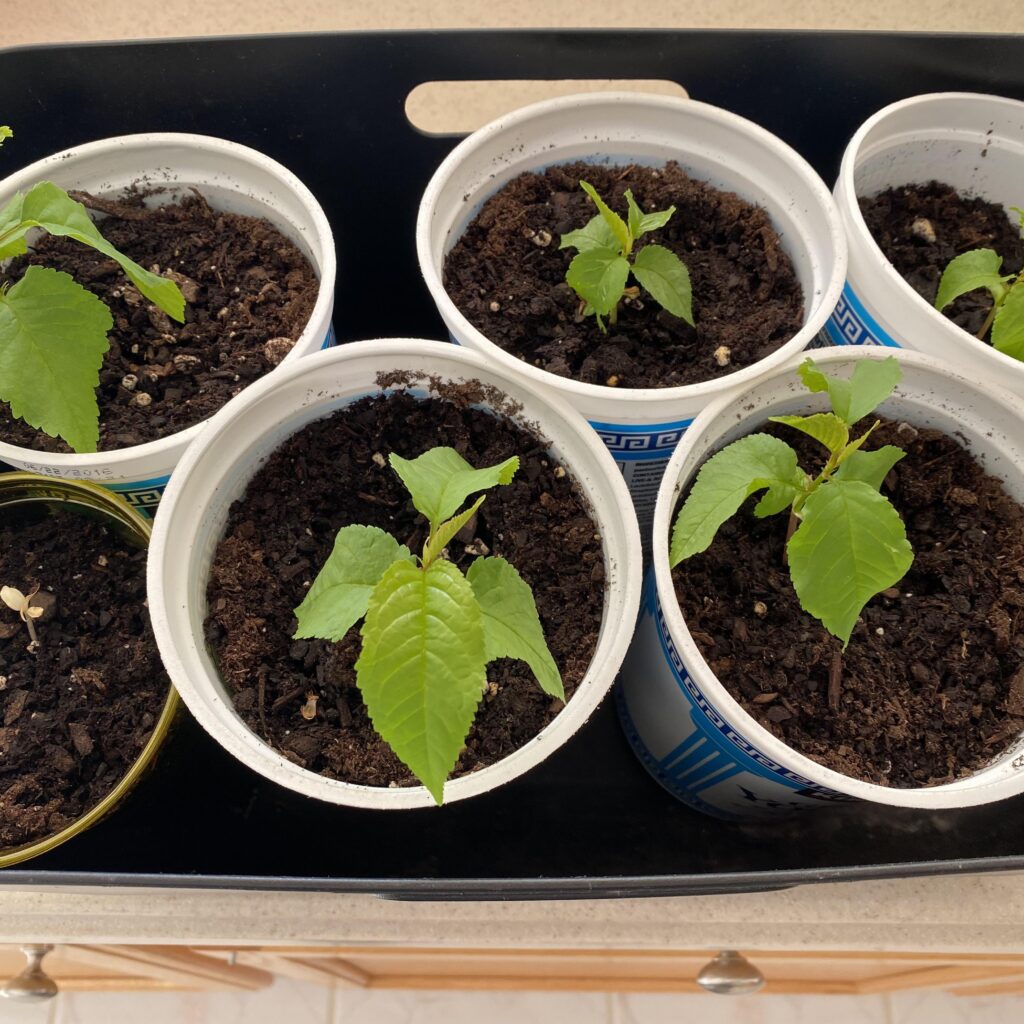
After one full year of container growth or once seedlings are 8-12 inches tall, they’re strong enough to transplant outdoors.
When to Transplant:
In early spring (before bud break) or fall (after the leaves drop).
How to Choose a Planting Spot:
- Full sun exposure (at least 6 hours a day).
- Well-draining soil with a pH between 6.0 and 7.0.
- Avoid low-lying areas where water collects.
Transplanting Process:
- Dig a hole twice as wide and deep as the seedling’s root ball.
- Place the seedling gently in the hole.
- Backfill with soil and water deeply.
- Add a 2-3 inch layer of mulch around the base to retain moisture and suppress weeds.
Step 7: Long-Term Care and Maintenance
Once established, your cherry tree will need regular care to thrive.
Watering:
- Water weekly during the growing season.
- Deep, infrequent watering encourages deep root systems.
- Reduce watering in fall and winter.
Pruning:
- Prune in late winter or early spring before new growth begins.
- Remove dead, diseased, or weak branches.
- Shape the tree for better light penetration and air circulation.
Fertilizing:
- Feed young trees in early spring with a balanced, slow-release fertilizer.
- Avoid over-fertilizing, especially nitrogen, as it promotes excessive leaf growth at the expense of flowers and fruit.
When Will a Seed-Grown Cherry Tree Bear Fruit?
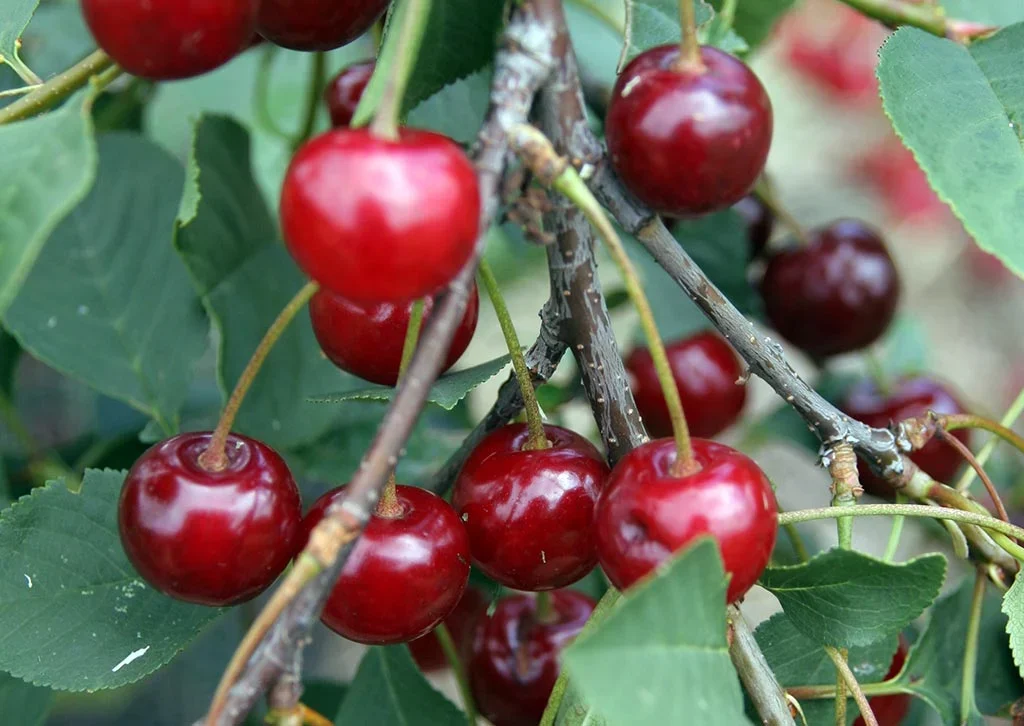
Be patient — cherry trees grown from seed typically take 5 to 10 years to produce fruit. Factors like growing conditions, care, and whether the tree is from a hybrid variety can affect fruit production.
Even if your tree never bears cherries, it will still reward you with beautiful spring blossoms and lovely shade for years to come.
Common Issues & Troubleshooting
| Problem | Likely Cause | Solution |
|---|---|---|
| No germination | Insufficient stratification | Ensure 8-12 weeks of cold, moist storage in fridge |
| Mold during stratification | Excess moisture in the medium | Replace paper towel or peat moss; dry seeds slightly |
| Drooping seedlings | Overwatering or poor drainage | Reduce watering, improve drainage |
| Yellowing leaves | Too much water or lack of nutrients | Adjust watering; fertilize as needed |
Final Thoughts
Growing a cherry tree from seed is a wonderful, hands-on DIY project that teaches patience and an appreciation for nature’s cycles. While it may take years before you see fruit, the experience of nurturing a plant from pit to tree is its own sweet reward.
With the right steps — from stratifying seeds to planting and caring for seedlings — anyone can successfully grow a beautiful cherry tree from a simple pit. Whether you’re a hobby gardener or just love trying new plant projects, this cherry tree journey is well worth the wait.


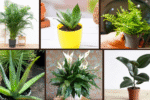
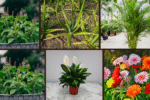


Leave A Comment